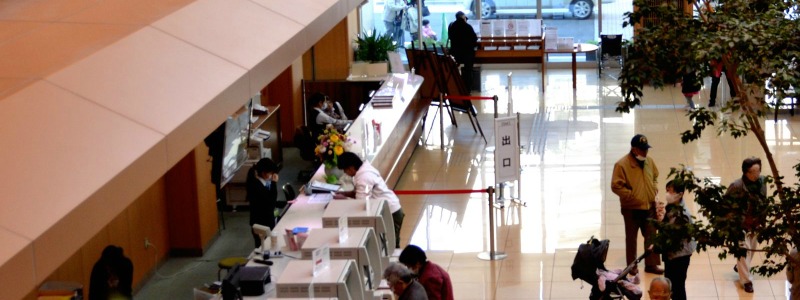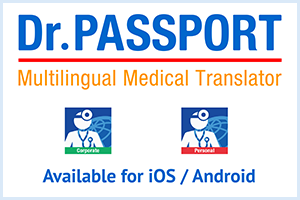Japan’s healthcare system can be quite confusing for foreigners, as it differs greatly from the systems in many Western countries. For common complaints including cold, flu and allergy symptoms, you may prefer to buy medicines directly from a drugstore. In the case of an emergency, an ambulance can be called by dialing 119. If you are not sure if your case qualifies as an emergency, you can dial #7119 and speak to an operator. If an ambulance is deemed necessary, your condition will be assessed by the EMT and you will be taken to an appropriate facility.
For non-emergency cases, follow these steps to ensure plain sailing when using medical facilities in Japan.
1. Visit reception
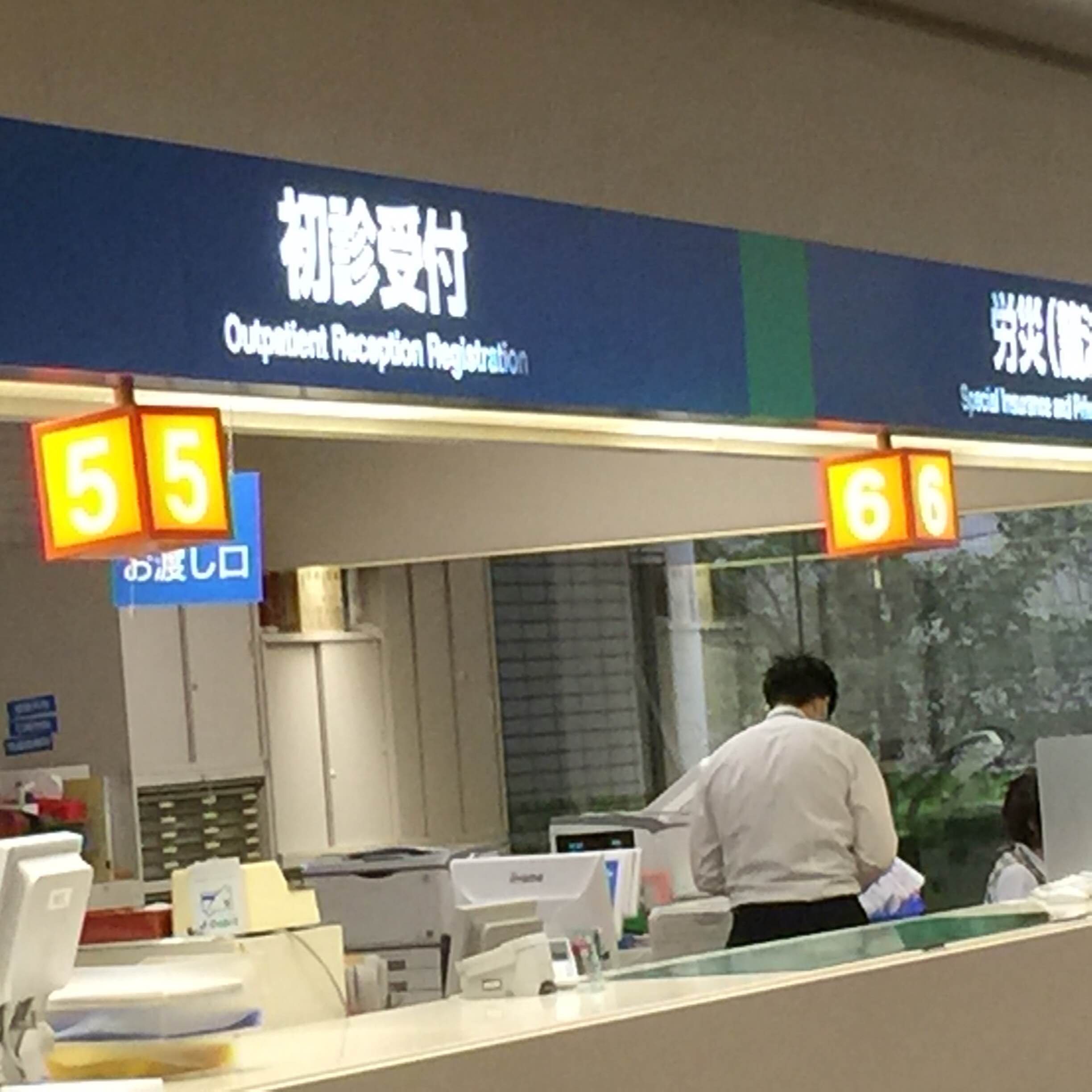 At the reception desk you will be asked to present your Japanese health insurance card if you have one. Those without Japanese insurance will be required to pay for treatment in full, and depending on the facility, non-residents may be required to pay a deposit before any consultation or treatment takes place. If you wish to pay by credit card you should confirm that the option is available.
At the reception desk you will be asked to present your Japanese health insurance card if you have one. Those without Japanese insurance will be required to pay for treatment in full, and depending on the facility, non-residents may be required to pay a deposit before any consultation or treatment takes place. If you wish to pay by credit card you should confirm that the option is available.
2. Complete necessary documents
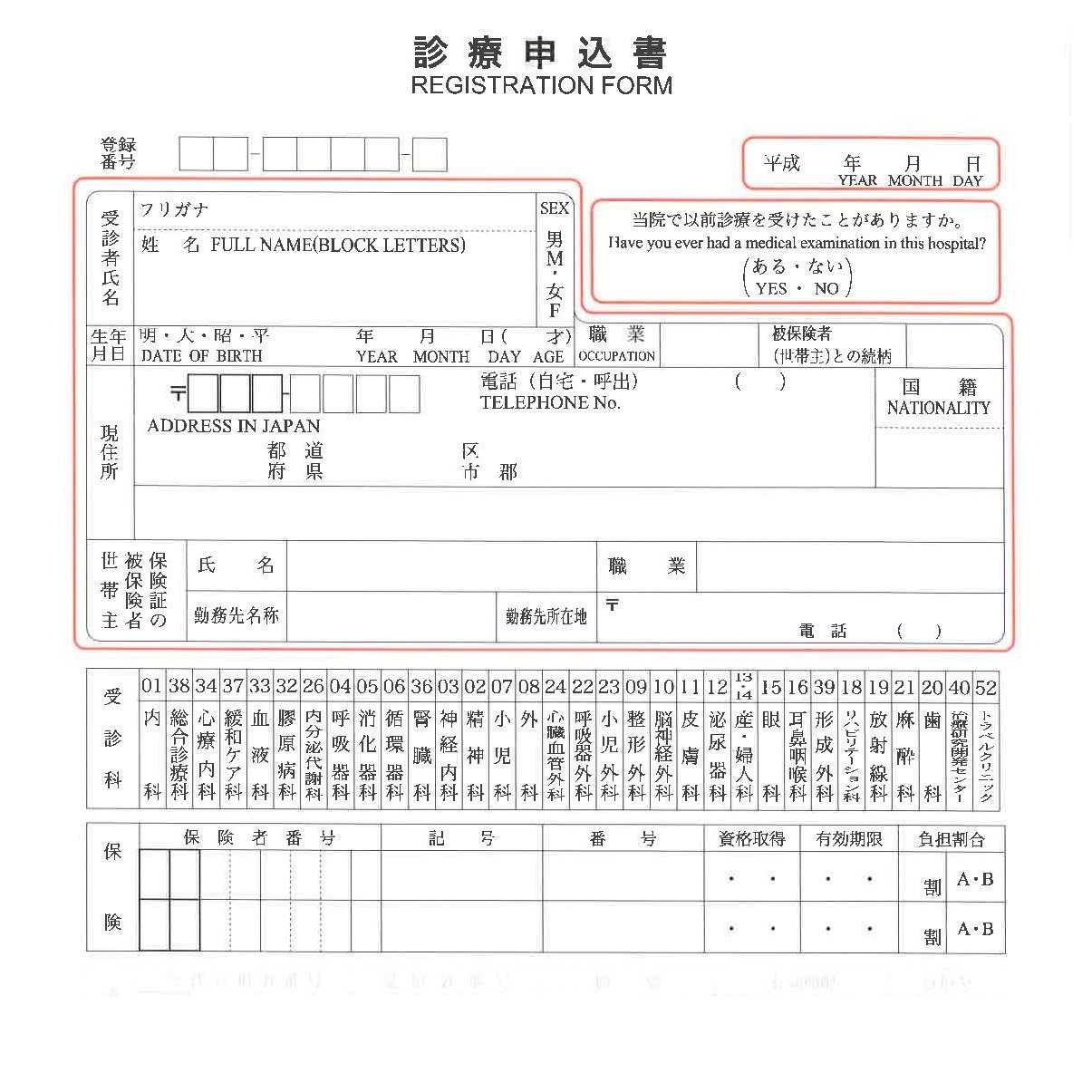 You will often be asked to fill out a medical history form, which may include a space for you to write your current symptoms. If the clinic has more than one specialization, you should confirm the kind of doctor you wish to see.
You will often be asked to fill out a medical history form, which may include a space for you to write your current symptoms. If the clinic has more than one specialization, you should confirm the kind of doctor you wish to see.
3. Undergo examination
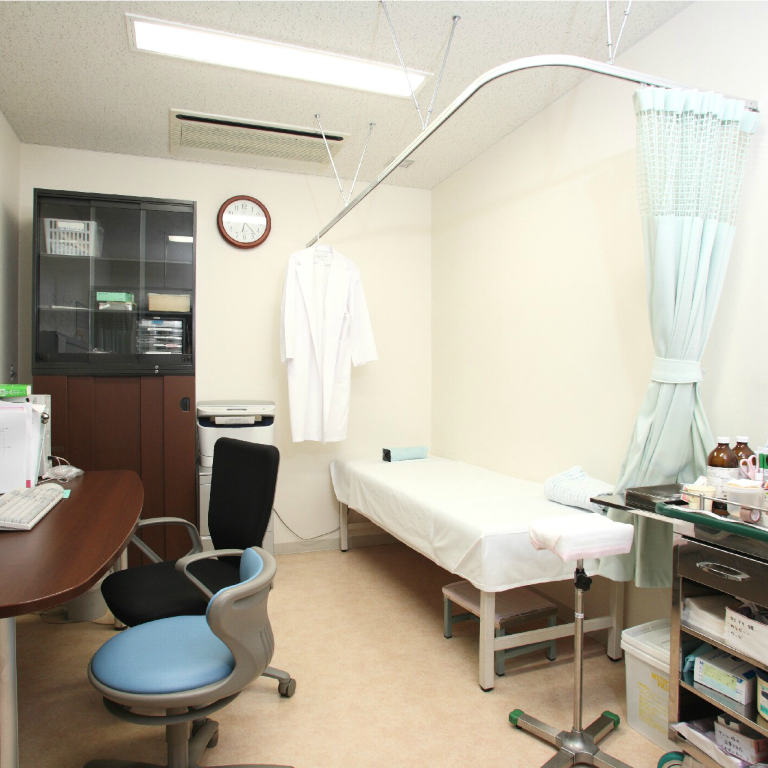 For clinics without an appointment system, patients are seen on a first-come-first-served basis. Waiting times will depend on the number of patients who arrived ahead of you, so it makes sense to arrive early when you can.
For clinics without an appointment system, patients are seen on a first-come-first-served basis. Waiting times will depend on the number of patients who arrived ahead of you, so it makes sense to arrive early when you can.
You may receive treatment then and there, or you may be given a prescription or a referral to another facility.
3. Settle the bill
 When the examination is over, you will need to pay for the consultation and any tests or treatment undergone. Payment in cash is most common.
When the examination is over, you will need to pay for the consultation and any tests or treatment undergone. Payment in cash is most common.
4A. Referral
If the clinic is unable to assist you, you may be referred to another institution. In this case, you will be given a “shōkaijō” (letter of referral) to present to the reception desk at the hospital or clinic you have been referred to.
4B. Prescription
 Some clinics or hospitals have small dispensaries and can provide you with medication when your examination is completed. Others will give you a prescription and direct you to a nearby “chōzai yakkyoku” (pharmacy) where you can get it filled. You will be required once again to confirm your payment method and present your health insurance card if you have one. In most cases, the script is only valid for four days, beginning the day it was written.
Some clinics or hospitals have small dispensaries and can provide you with medication when your examination is completed. Others will give you a prescription and direct you to a nearby “chōzai yakkyoku” (pharmacy) where you can get it filled. You will be required once again to confirm your payment method and present your health insurance card if you have one. In most cases, the script is only valid for four days, beginning the day it was written.
Drugstores
Drugstores selling basic medications, in addition to a wide range of everyday items, are very common in Japan. In recent years, the range of medicines available at these stores have increased, so for common problems – colds, flu and allergies – it is becoming less essential to be seen by a doctor. As most drugstores do not handle prescriptions, if you receive a prescription from a doctor you should check the location of the nearest pharmacy with the clinic. Pharmacies typically specialize in prescriptions, but may have some basic medicines available to everyone. They will often provide you with a “kusuri techō” (medicine notebook) that can be used to keep a track of which medicines you have received.
